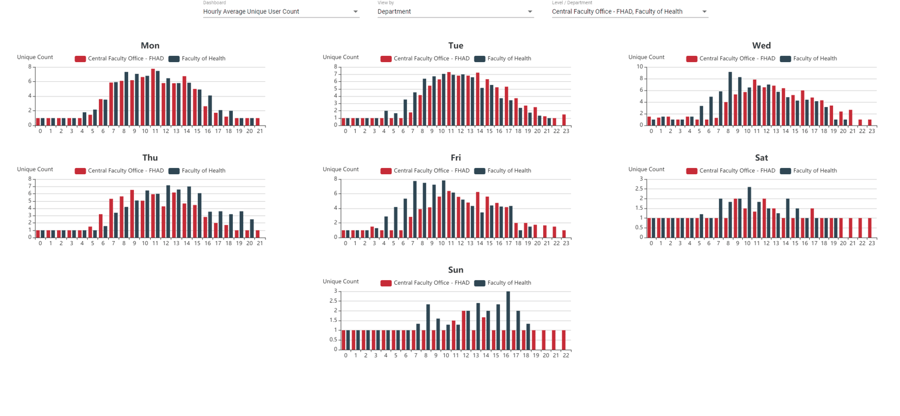Traditionally decision makers across industries have been able to access and work with space allocation data. That is information on the planned or expected usage of physical space.
Technology has recently made further insight into the accurate, valid, real-time space utilization data possible through the adoption of IoT devices, sensors, software, and other technologies, and with it, the opportunity to optimize space utilization.
Why is Physical Space Utilization Important?
It’s no secret, space is expensive, and misused space not only leads to bloated property portfolios, but it also impacts the organizational mission, as spaces often impact the activities we do within them, from workplace productivity to campus learning.
The increasing availability of space utilization data opens up a wealth of possibilities across industries, including using machine learning (ML) to solve problems prevalent in space utilization in an effort to optimize capital-intensive assets.
To illustrate, we partnered with a tertiary education provider (TEP) to understand the planned usage vs the actual utilization of rooms and floors in a select campus building by students and faculty staff across departments. Using 30 days of WIFI data, The AI & Analytics Engine was enlisted to clean the data and recommend a model best suited to predict a weekly forecast of floor utilization and attributes of that utilization.
The Challenge: How can tertiary education providers better utilize space?
Increasing demand for higher education is placing pressure on TEPs to better utilize their real-estate resources, this is compounded by the expectation of a connected, intuitive and, seamless campus experience by the growing student body.
With the rising expectation of the ‘smart campus’ experience and rapid development of IoT technology, bookable spaces within education providers have flourished, with them, an increasingly large pool of room booking data and opportunities to improve and optimize space utilization.
Given the amount of information from the booking systems, and the WIFI data made available – The TEP identified an objective: To understand the floor utilization within a select building by students and guests across different time scales. Providing the TEP with insights into space allocation and utilization patterns in an effort to inform future space optimization initiatives.
Educational institutions should reflect on their goals and understand how they can benefit from adopting advancements that other sectors have grown accustomed to. In turn, providing an experience that their student body already expects.
The Solution: Understand occupancy to find opportunity for improvements
The data was collected cleaned and modelled then developed into a dashboard for easy visualization of results.
The process was performed within a streamlined ML pipeline, and required minimal human intervention. The output was a visual dashboard view of the count of unique bookers vs. occupiers within the specified building, across time. Attributes, enabled an in-depth view, including the department of the unique user and the floor or room occupancy.

Recommendations to review the current data environments and enhance the current data collection and curation practices would only inform a more granular understanding of space utilization patterns. Greater specificity to room utilization would require additional WIFI data and other additional data sources.
The data sources and methodology of the collection are repeatable and scalable to other buildings and campuses. The results, provide a clear view of real-estate allocation, and utilization within a select building, however, if rolled out across campus could be used to ear-mark areas for future expansion or optimizations in an effort to enhance the student experience and reduce costs.
Given the complexity of real estate leasing and ownership for TEPs, there is a significant benefit from accurate verifiable data when proposing changes to campuses and getting everyone from department heads to the C-suite on board.
The AI & Analytics Engine Provided:
- Collaborative AI/ML application development & deployment at speed and at scale.
- Continuous & autonomous active model training/learning.
- Super-fast & scalable smart data ingestion and transformation.
- Automatic orchestration & full life app/model cycle management.
- Security & privacy by design.
- Platform agnosticism with flexible deployment options.
Machine Learning for Space Optimization Across Industries
Beyond TEP’s, physical space is among the most coveted – and expensive resource for many industries. Maximizing the efficiency of the space therefore a constant and challenging concern for management across a broad range of industries, including;
- Retail
- Warehousing & logistics
- Hospitality
- Hospitals and Nursing Homes
The application of machine learning to space optimization is broad. The AI & Analytics Engine helps decision-makers across industry leverage ML for a truly strategic analysis of their real estate portfolio, often the amount of waste is significant, and the pay-off from rightsizing or optimizing a portfolio, substantial.
The AI & Analytics Engine provides a fast and configurable solution to gathering deeper insight with the increasing amount of data available. And, can be used for multiple space allocation & utilization problems including:
- Analyzing the disparity in planned vs actual.
- Changing the structure of spaces.
- Creating, altering, or updating additional spaces.
- Incorporating technology to improve booking processes or technology to better manage the use of the space, like sensors or check-in devices to verify the room is in use and;
- Implementing policies that discourage unused bookings.